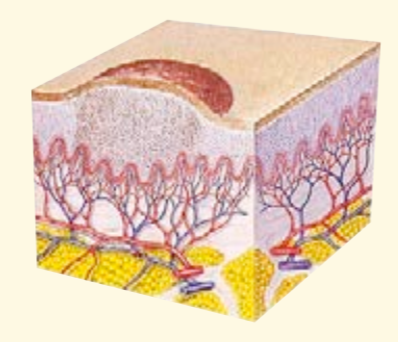Warts
Content of This Page
1- Introduction
2- Causes
3- Symptoms
4- Types of Disease
5- Treatment
6- What Should You Avoid
Introduction
Warts are benign growths on the skin caused by infection with human papillomavirus (HPV). They can appear on various parts of the body and come in different types, including common warts, plantar warts, flat warts, and genital warts.

Causes
- HPV Infection: Warts are caused by infection with specific types of human papillomavirus (HPV). Different HPV types cause different kinds of warts.
- Direct Contact: HPV is spread through direct contact with warts or surfaces contaminated with the virus.
- Weakened Immune System: People with weakened immune systems are more susceptible to developing warts.
- Skin Injuries: Small cuts, abrasions, or injuries to the skin can facilitate HPV entry and increase the likelihood of developing warts.
Symptoms
- Rough Texture: Warts typically have a rough, raised surface.
- Tenderness or Pain: Some warts, especially plantar warts, can be painful, particularly when walking or pressing on them.
- Itching or Burning: Warts may cause itching or a burning sensation.

Types of Disease
Common Warts (Verrucae Vulgaris)
- Appearance: Typically appear as small, rough bumps on the fingers, hands, and elbows. They often have a grainy surface and may be grayish or flesh-colored.
- Location: Common on fingers, hands, and around the nails.
Plantar Warts (Verrucae Plantaris)
- Appearance: Found on the soles of the feet. They may appear as small, hard growths with a rough surface and can cause pain when walking.
- Location: Sole of the foot.
Flat Warts (Verrucae Plana)
- Appearance: Smaller, smoother, and flatter than other types of warts. They often occur in clusters and can be pink, light brown, or slightly yellow.
- Location: Common on the face, legs, and arms.
Genital Warts (Condylomata Acuminata)
- Appearance: Soft, fleshy growths that can be single or multiple and may form clusters. They can be flat, cauliflower-shaped, or raised.
- Location: Genital and anal areas.
Filiform Warts
- Appearance: Thin, finger-like projections that often appear around the eyes, nose, or mouth.
- Location: Typically around the face or neck.
Treatment
Over-the-Counter Treatments:
- Salicylic Acid: Commonly used to remove warts by gradually dissolving the wart tissue.
- Cryotherapy Products: Home use products that freeze warts, similar to professional treatments.
Medical Treatments:
- Cryotherapy: Freezing the wart with liquid nitrogen to destroy the tissue.
- Electrosurgery: Using electric current to burn off the wart.
- Laser Therapy: Using a laser to destroy the wart tissue.
- Chemical Peels: Applying stronger chemicals to remove the wart, often used for stubborn warts.
- Immunotherapy: Using medications or injections to stimulate the immune system to fight the HPV infection.
Surgical Removal:
- Excision: Cutting out the wart surgically, usually reserved for larger or more persistent warts.
Topical Prescription Medications:
- Prescription Creams: Such as imiquimod or 5-fluorouracil, which help to stimulate the immune response or destroy the wart tissue.
What Should You Avoid
1. Direct Contact with Warts
- Impact: Warts are contagious and can spread through direct skin-to-skin contact.
- Avoid: Touching or picking at warts, whether they are on your own body or someone else’s. Avoid direct contact with warts to reduce the risk of spreading them.
2. Sharing Personal Items
- Impact: HPV can be transmitted through shared items that come into contact with infected skin.
- Avoid: Sharing personal items like towels, razors, socks, or shoes. Use your own personal items to minimize the risk of spreading the virus.
3. Walking Barefoot in Public Areas
- Impact: Public areas like pools, locker rooms, and showers can harbor HPV, leading to plantar warts.
- Avoid: Walking barefoot in public areas. Wear protective footwear in communal showers, pools, and locker rooms.
4. Using Inadequate Treatment Methods
- Impact: Using unproven or inappropriate treatments can lead to ineffective results and potential complications.
- Avoid: Using home remedies or treatments that are not recommended by a healthcare professional. Stick to approved treatments and consult a provider for persistent or troublesome warts.
5. Ignoring Early Symptoms
- Impact: Early treatment can prevent warts from spreading or becoming more severe.
- Avoid: Ignoring new or changing warts. Seek medical advice if you notice warts developing, especially if they cause discomfort or spread.
6. Scratching or Picking at Warts
- Impact: Scratching or picking at warts can spread the virus to other areas of your skin and lead to additional warts.
- Avoid: Touching or scratching warts. Keep warts covered with a bandage to prevent spreading and reduce irritation.
7. Excessive Moisture or Skin Irritation
- Impact: Prolonged exposure to moisture can aggravate warts, especially plantar warts on the feet.
- Avoid: Keeping affected areas excessively moist. Ensure feet and other wart-prone areas are dry and clean.
8. Unprotected Skin Exposure
- Impact: If warts are treated with methods like cryotherapy, the skin can be more sensitive to external factors.
- Avoid: Exposing treated areas to extreme temperatures or harsh environments without protection. Follow aftercare instructions provided by your healthcare provider.
9. Inconsistent Treatment Application
- Impact: Inconsistent use of treatments can reduce their effectiveness and prolong the presence of warts.
- Avoid: Skipping or irregular application of prescribed or over-the-counter wart treatments. Follow treatment regimens as directed by your healthcare provider.
10. Self-Diagnosis or Self-Treatment
- Impact: Misdiagnosing or improperly treating warts can lead to complications or ineffective management.
- Avoid: Diagnosing or treating warts without professional guidance. Consult a healthcare provider for an accurate diagnosis and appropriate treatment plan.
11. Using Harsh Chemicals
- Impact: Harsh chemicals can irritate or damage the skin, potentially worsening the condition.
- Avoid: Applying non-medical or harsh chemicals to warts. Use only recommended treatments and products designed for wart removal.
12. Unprotected Skin After Treatment
- Impact: Treated skin may be more susceptible to irritation or infection.
- Avoid: Exposing treated areas to irritants or not following post-treatment care instructions. Protect the skin and follow aftercare recommendations.